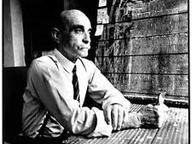Nicolas Party. Seahorse

Nicolas Party, Landscape, 2024
Dal 10 April 2024 al 30 May 2024
Milano
Luogo: Kaufmann Repetto Milano
Indirizzo: Via di Porta Tenaglia 7
Telefono per informazioni: +39 02 72094331
E-Mail info: info@kaufmannrepetto.com
Sito ufficiale: http://www.kaufmannrepetto.com
kaufmann repetto is pleased to announce Seahorse, Nicolas Party’s third solo exhibition with the gallery, opening in Milan on April 10th. Party’s new pastels present an array of subject matters, ranging from portraits and forests to aquatic fauna, staged in a dreamlike setting suffused with swirling nebulae and atmospheric explosions. The voluptuous gravity of his previous compositions, with concisely defined forms and solid, color-saturated surfaces, gives way to a fantastic vision which conjures a more unstable universe, pervaded by a feeling of evanescence and fragility.
Rich in associations in cultures throughout the world, seahorses and octopuses are floating in colorful aquatic environments while moths are gliding through golden clouds. Captured with illusionistic precision, the animals seem to have paused in the midst of their movements, insinuating a sense of fugacity to the scenes. With their long snouts and armored bodies, seahorses have always been observed with benevolent curiosity and wonder, sparked by their unusual behaviors such as couples holding tails, and males giving birth and nursing the offspring. Octopuses, since antiquity ascribed to the sphere of mythological sea creatures, have appealed to human’s imagination by virtue of their bizarre appearance, their eccentric abilities, and their high intelligence. Both species have in common sophisticated visual tactics: seahorses can camouflage their flexible bodies within their surroundings, mimicking the forms and shades of coral branches and seaweed, while octopuses, the masters of trickery, can entirely change the color of their skins when going into hiding. Metamorphosis is also what characterizes the life cycle of the moth and of its more prominent sibling, the butterfly. Among the most frequently represented animals in art history, these winged insects have been employed as vivid symbols of the fleeting nature of beauty and life’s ephemerality. The moths’ fatal attraction to flames has further contributed to this long-lasting fascination, marking them as the melancholic harbingers of death.
Taking up the symbolic importance of these subjects, the surroundings that provide the fauna’s habitat are transformed by Party into a highly ambiguous environment. Harnessing the luminous intensity of pastel, the powdery pigments are used to evoke the layered effects typically achieved by watercolors, creating swirly vortexes and vaporous expansions. Seahorse, octopus and moth all seem to hover through the same enigmatic nebulous substance, halfway between a liquid and a gas. Its complex polychromies might hint at looming environmental disasters: the vivid hues of yellow and orange could be reflections of devastating fires, while gloomy dark swirls evoke water masses contaminated by dangerous liquids. The animals’ enchanting vitality seems to be threatened by fastly approaching extinction, fueling our widely perceived anxieties for the collapse of the ecosystem. Deliberately oscillating between naturalistic description and dystopian dream, these works are also an homage to Odilon Redon’s Wonders of the Sea, a series of pastel where elements of observed reality amalgamate into bizarre and wondrous underwater visions. Like the French artist, Party affirms painting as an imaginative space, able to reshape our perception of reality into reverie-like disorientation.
Also those works that channel his longstanding interest in specific genres denote a shift in the artist’s approach. In previous landscapes, trees are generally depicted in their entirety, the vertical trunks rooted to the ground and transmitting a sense of firmness. With their slender branches and foamy tufts of multicolored leaves, the forest paintings presented in this show focus instead on the softly waiving canopies, hence on the impermanent part of the tree which transforms during the seasons. Likewise, in a series of new portraits the statuary aplomb of Party’s iconic busts and torsos gives way to soft-focus close ups in mutable flows of steely grey reminiscent of the Pre-Raphaelite–inflected aesthetic of Victorian photographer Julia Margaret Cameron. Allowing some degree of realism in the depiction of these diaphanous physiognomies, the artist seems to leave us space for a more empathic identification with the anonymous sitters. But at the same time, by evoking the hazy blurriness of the early photographic medium, their facial features are already fading away, and the tenuous relationship between the viewer and the viewed dissolves into transcendence. Ultimately, the fleetingness of artistic expression becomes a metaphor for the precarious fragility of life, a theme that underpins the entire exhibition.
Nicolas Party (born in Lausanne in 1980) lives and works in New York. He studied at ECAL - École cantonale d’art in Lausanne and at the Glasgow School of Arts in Scotland. Among museums and international institutions that hosted his solo shows are Museum Frieder Burda, Baden-Baden (2023); Museo Poldi Pezzoli, Milano (2022); Musée des Beaux-Arts Montréal (2022); Hirshhorn Museum and Sculpture Garden, Washington DC (2021); Kestner Gesellschaft, Hannover (2021); Le Consortium, Dijon (2021); MASI, Lugano (2021); The FLAG Art Foundation, New York (2019); M WOODS, Beijing, (2018-2019); Musée Magritte, Bruxelles (2018); Hammer Museum, Los Angeles (2016); Dallas Museum of Art, Dallas (2016); Centre Culturel Suisse, Paris (2015) and Swiss Institute, New York (2012). His work has been featured in numerous international group exhibitions at venues including Kunsthaus Zurich, Zurich; Deichtorhallen, Hamburg; MACRO, Rome; FRACLorraine, Metz; Fondation Vincent Van Gogh, Arles; s.m.a.k., Ghent; Inverleith House, Royal Botanic Garden, Edinburgh; Himalayas Museum, Shanghai; Museum Folkwang, Essen, among many others.
Rich in associations in cultures throughout the world, seahorses and octopuses are floating in colorful aquatic environments while moths are gliding through golden clouds. Captured with illusionistic precision, the animals seem to have paused in the midst of their movements, insinuating a sense of fugacity to the scenes. With their long snouts and armored bodies, seahorses have always been observed with benevolent curiosity and wonder, sparked by their unusual behaviors such as couples holding tails, and males giving birth and nursing the offspring. Octopuses, since antiquity ascribed to the sphere of mythological sea creatures, have appealed to human’s imagination by virtue of their bizarre appearance, their eccentric abilities, and their high intelligence. Both species have in common sophisticated visual tactics: seahorses can camouflage their flexible bodies within their surroundings, mimicking the forms and shades of coral branches and seaweed, while octopuses, the masters of trickery, can entirely change the color of their skins when going into hiding. Metamorphosis is also what characterizes the life cycle of the moth and of its more prominent sibling, the butterfly. Among the most frequently represented animals in art history, these winged insects have been employed as vivid symbols of the fleeting nature of beauty and life’s ephemerality. The moths’ fatal attraction to flames has further contributed to this long-lasting fascination, marking them as the melancholic harbingers of death.
Taking up the symbolic importance of these subjects, the surroundings that provide the fauna’s habitat are transformed by Party into a highly ambiguous environment. Harnessing the luminous intensity of pastel, the powdery pigments are used to evoke the layered effects typically achieved by watercolors, creating swirly vortexes and vaporous expansions. Seahorse, octopus and moth all seem to hover through the same enigmatic nebulous substance, halfway between a liquid and a gas. Its complex polychromies might hint at looming environmental disasters: the vivid hues of yellow and orange could be reflections of devastating fires, while gloomy dark swirls evoke water masses contaminated by dangerous liquids. The animals’ enchanting vitality seems to be threatened by fastly approaching extinction, fueling our widely perceived anxieties for the collapse of the ecosystem. Deliberately oscillating between naturalistic description and dystopian dream, these works are also an homage to Odilon Redon’s Wonders of the Sea, a series of pastel where elements of observed reality amalgamate into bizarre and wondrous underwater visions. Like the French artist, Party affirms painting as an imaginative space, able to reshape our perception of reality into reverie-like disorientation.
Also those works that channel his longstanding interest in specific genres denote a shift in the artist’s approach. In previous landscapes, trees are generally depicted in their entirety, the vertical trunks rooted to the ground and transmitting a sense of firmness. With their slender branches and foamy tufts of multicolored leaves, the forest paintings presented in this show focus instead on the softly waiving canopies, hence on the impermanent part of the tree which transforms during the seasons. Likewise, in a series of new portraits the statuary aplomb of Party’s iconic busts and torsos gives way to soft-focus close ups in mutable flows of steely grey reminiscent of the Pre-Raphaelite–inflected aesthetic of Victorian photographer Julia Margaret Cameron. Allowing some degree of realism in the depiction of these diaphanous physiognomies, the artist seems to leave us space for a more empathic identification with the anonymous sitters. But at the same time, by evoking the hazy blurriness of the early photographic medium, their facial features are already fading away, and the tenuous relationship between the viewer and the viewed dissolves into transcendence. Ultimately, the fleetingness of artistic expression becomes a metaphor for the precarious fragility of life, a theme that underpins the entire exhibition.
Nicolas Party (born in Lausanne in 1980) lives and works in New York. He studied at ECAL - École cantonale d’art in Lausanne and at the Glasgow School of Arts in Scotland. Among museums and international institutions that hosted his solo shows are Museum Frieder Burda, Baden-Baden (2023); Museo Poldi Pezzoli, Milano (2022); Musée des Beaux-Arts Montréal (2022); Hirshhorn Museum and Sculpture Garden, Washington DC (2021); Kestner Gesellschaft, Hannover (2021); Le Consortium, Dijon (2021); MASI, Lugano (2021); The FLAG Art Foundation, New York (2019); M WOODS, Beijing, (2018-2019); Musée Magritte, Bruxelles (2018); Hammer Museum, Los Angeles (2016); Dallas Museum of Art, Dallas (2016); Centre Culturel Suisse, Paris (2015) and Swiss Institute, New York (2012). His work has been featured in numerous international group exhibitions at venues including Kunsthaus Zurich, Zurich; Deichtorhallen, Hamburg; MACRO, Rome; FRACLorraine, Metz; Fondation Vincent Van Gogh, Arles; s.m.a.k., Ghent; Inverleith House, Royal Botanic Garden, Edinburgh; Himalayas Museum, Shanghai; Museum Folkwang, Essen, among many others.
SCARICA IL COMUNICATO IN PDF
COMMENTI

-
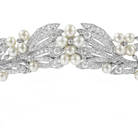 Dal 14 November 2025 al 15 March 2026
Roma | Musei Capitolini
Dal 14 November 2025 al 15 March 2026
Roma | Musei Capitolini
Cartier e il Mito ai Musei Capitolini
-
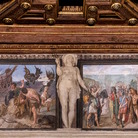 Dal 14 November 2025 al 15 February 2026
Bologna | Palazzo Fava
Dal 14 November 2025 al 15 February 2026
Bologna | Palazzo Fava
Michelangelo e Bologna
-
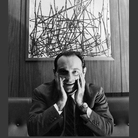 Dal 13 November 2025 al 18 April 2026
Roma | Musei Vaticani
Dal 13 November 2025 al 18 April 2026
Roma | Musei Vaticani
“L’irrefrenabile curiosità”. Capolavori del Novecento dalla Collezione di Leone Piccioni
-
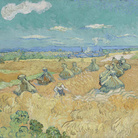 Dal 15 November 2025 al 10 May 2026
Treviso | Museo Santa Caterina
Dal 15 November 2025 al 10 May 2026
Treviso | Museo Santa Caterina
DA PICASSO A VAN GOGH. Capolavori dal Toledo Museum of Art. Storie di pittura dall’astrazione all’impressionismo
-
 Dal 8 November 2025 al 11 January 2026
Venezia | Museo Correr
Dal 8 November 2025 al 11 January 2026
Venezia | Museo Correr
CARATTERI. Calligrafia e tipografia: Corea del Sud e Stati Uniti
-
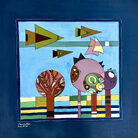 Dal 8 November 2025 al 22 February 2026
Brescia | Museo di Santa Giulia
Dal 8 November 2025 al 22 February 2026
Brescia | Museo di Santa Giulia
Material for an Exhibition. Storie, memorie e lotte dalla Palestina e dal Mediterraneo
